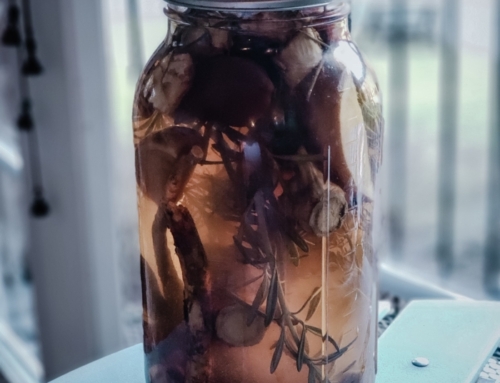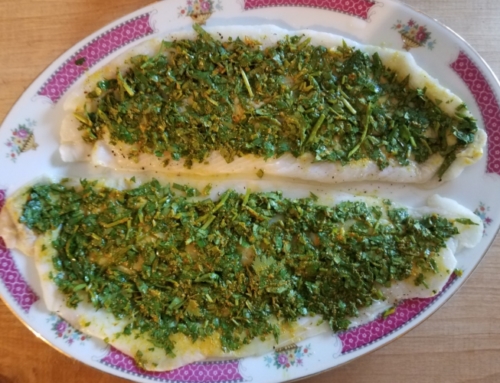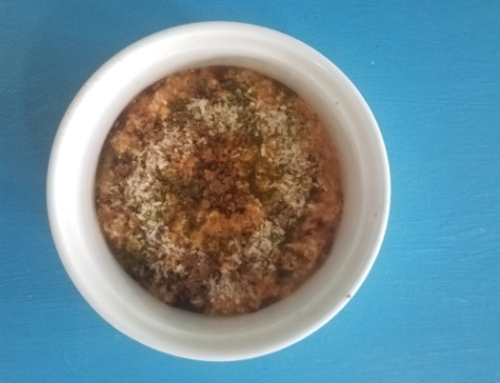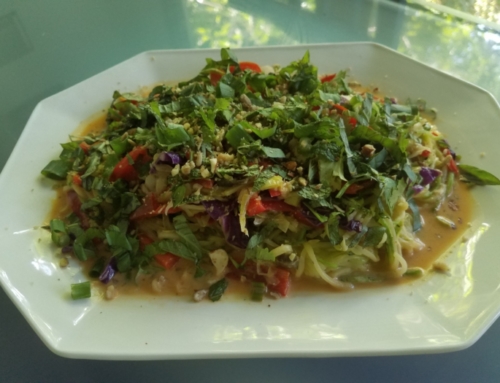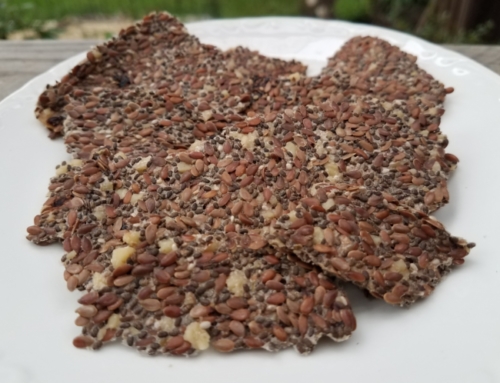Earlier in the week, we broke down what water kefir was, how to get started with it and the many things you can do with it. Today our focus will be on bone broth. Often when I am speaking and I start talking about bone broth, especially what I put in mine, I see people screwing up their noses and even some uttered ewwws! Honestly, though my combination comes out tasting pretty wonderful; I’ve even snuck it into people who said they’d never eat it! who had no idea what was in their sauce or pate or even what their soup base was. Now I’m finally sharing my “secret” basic bone broth recipe after much demand. Every batch will be different too depending on what animal bones and such you use. Especially with the colder months coming on, bone broth will be your best friend. Let’s find out why and how!
Bone Broth – What Is It?
Bone broth is nothing new. It has been around for centuries. Almost every culture around the world has its version of bone broth. Traditionally every part of the animal was used and the bones almost always went into a stockpot to be cooked down. Bone broth extended the animals’ use, added nutrition and had many uses. It is still widely used in many cultures around the world but has fallen out of favour until recently here in North America. In European culinary circles, bone broth has and is still widely used as a foundation for food preparation. In Asian cultures, fish and fish bones are widely used to create rich bases for dishes along with beef. Bone broth goes beyond soup and stews.
The Difference Between Bone Broth, Stock and Broth
All three of these terms often are used interchangeably but they do have their differences in nutritional profile and uses. Bone broth, stock and broth are built on the same basic foundation of water, meat or bones (or both), vegetables and seasonings. The ingredients are cooked for several hours and eventually, the solids are removed by straining the liquid.
- Bone Broth – is typically made with bones and can contain a small amount of meat still adhering to the bones. Bone broths are typically simmered for a very long period of time (often in excess of 24 hours), with the purpose being not only to produce gelatin from collagen-rich joints but also to release the minerals from bones. By the end of cooking, the bones should crumble when pressed lightly between your thumb and forefinger.
- Stock – is typically made with bones and can contain a small amount of meat still stuck to the bone. To improve the flavour the bones are often roasted before simmering them. Stock is typically simmered for a moderate period of time (3 to 4 hours) and is a good source of gelatin.
- Broth – is typically made with meat and can contain a small amount of bones (think of the bones in a fresh whole chicken). Broth is usually simmered for a short period of time (45 minutes to 2 hours), tends to be very light in flavour, thin in texture and rich in protein.
As you can see there are slight variances between the three. All have nutritional value and are a fabulous addition to your cooking repertoire. For our purposes here we are going to keep the focus on just the bone broth.
Health Benefits
Bone broths are extraordinarily rich in protein; amino acids and are a rich source of minerals as well, especially with my recipe that I share below with you. Glycine is one of the simplest naturally occurring amino acid and is a constituent of most proteins. It supports the body’s detoxification process and is used in the synthesis of hemoglobin, bile salts and other naturally-occurring chemicals within the body. Glycine also supports digestion and the secretion of gastric acids.
Proline is a constituent of most proteins, especially collagen. Especially when paired with vitamin C, it supports good skin health.
Bone broths are also rich in gelatin which can support skin health. Gelatin also supports digestive health which is why it plays a critical role in gut healing and repair. And chicken bone broth is good for a cold; there’s science behind that now, too. It reduces inflammation and inhibits neutrophil migration; which means it helps mitigate the side effects of colds, flus and upper respiratory infections. Fish stock is great thyroid support. I like to alternate the kinds of bones so I’m always getting a varied amino acid profile and nutrients. If you’ve been following me for a while you know I stress variety, variety, variety; local and in season in all things. This includes your bone broths as well!
Why Include Bone Broth?
It’s inexpensive to make, adds exponential nutrition, is easy to make, requires very little time commitment (especially with a crockpot). Boosts immunity, improves digestion, supports healthy organs, skin, hair and overall health. You really can’t go wrong. What have you got to lose? (especially when you stand to gain so much.)
Live Vibrantly Basic Bone Broth Recipe
You can make bone broth from any kind of bones and that animals offal; the ones I have listed are by no means all there is. Source out what is local to you. Try new things!
Crockpot method…(for 6qt crockpot)
Category 1 – Beef, lamb, pork, venison, bison: 1 pound of bones any combo, 1 fist-sized piece of liver and any other offal
Category 2 – Chicken, turkey, duck, rabbit: 1 carcass or whatever bones you have, plus 3 – 4 chicken feet if using chicken and a good fist-sized amount of the liver or other offal (such as heart, kidney, etc.)
Category 3 – Fish: 3 medium-sized fish heads and carcasses along with bones, skin and I like some flesh still left on for added flavour. Try to get and use the whole carcass, eyes and all parts.
2 – 4 large cloves garlic, in skin fine (if sharing your bone broth with pets, use 2 cloves only)
2 tablespoons fresh rosemary or 1 heaping teaspoon dried
2 – 3 tablespoons apple cider vinegar (make sure it is the raw, unfiltered kind)
Sea salt (to taste: if sharing your bone broth with pets (highly recommended!) do not add salt; add it when you reheat for yourself)
Filtered water to fill the crockpot
Add all ingredients to medium-sized crockpot, approximately 6 quarts, cover with water to within 2 inches from the rim or maximum fill line marked on your pot.
For category 1 set the timer for 24 – 26 hours on low (the thicker the bones the longer the setting).
For category 2 set the timer 16 hours on low.
For category 3 set the timer for 8 hours on low.
DO NOT SKIM YOUR BROTH! The “foam” and other stuff that rises to the top is full of nutrients and protein. Stir it back in.
You can continue to leave it on warm for a few hours if you are going to use it shortly. Otherwise turn it off, strain and pour clear broth into quart mason jars to cool and store in the fridge. The broth will keep for one week in the fridge. I strain it while it’s hot so as to get all the fat and gelatin into the broth. If you wish to freeze some, cool completely after strained then transfer to a freezer container or stainless steel ice cube tray(s) and voila – you are all set. Once the “broth” cubes are frozen remove from tray and put in a resealable freezer bag. The broth will be good frozen for up to six months.
Ways To Use Bone Broth
Even if drinking bone broth straight up is just not your thing, there are so many other uses. I find it adds a richness and depth to most everything I add it to without the flavour being overpowering. I tend to use my bone broth many different ways and here are just some of those:
- as a base for soups and stews; add meat and veggies
- added to tomato sauce and other sauces; usually about a tablespoon or two
- added to dips, nut pates and pestos; usually about a teaspoon to a tablespoon
- braise and roast meats in it
- braise and saute veggies in it
- drink a cup of it daily just as is heated up (add salt if you didn’t in the original preparation)
So here’s to adding bone broth to your daily habits! Of course, these days you can buy beautifully prepared traditional bone broths if you really don’t have time, can’t stand the smell, don’t have a crockpot, instant pot or room to use one or for whatever reason. You can purchase homemade bone broth from your local health food grocery store, local farm, farmers’ markets and online. Do be sure to check the ingredients, research how it’s made and where the bones are sourced from when not making your own and purchasing from someone else.
Do you have a use for bone broth that I didn’t list here? Please do share! Leave your comment below.
Stay tuned for next week’s blog about soaking and fermenting of nuts, seeds, legumes and grains.
Live Vibrantly!
ps. Curious to know more about how to get the most nutrients from your food and make the best choices? Then I invite you to check out my book: “Live Vibrantly! 10 Steps to Maintain Youthfulness, Increase Energy and Restore Your Health”. Go here for more information and how to get your free bonuses.



